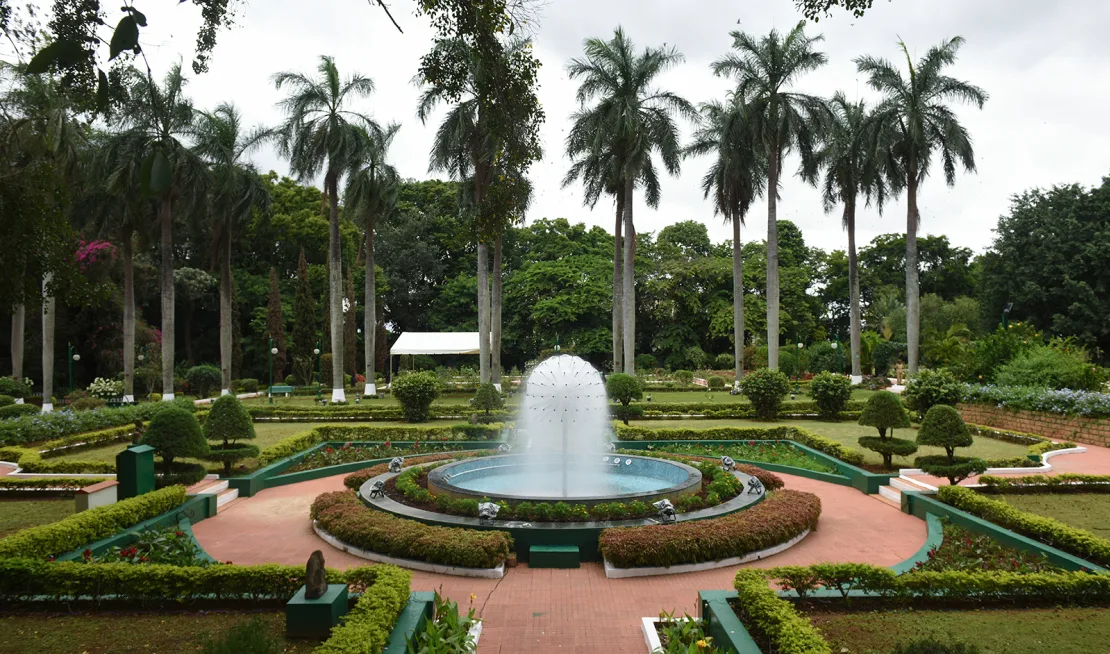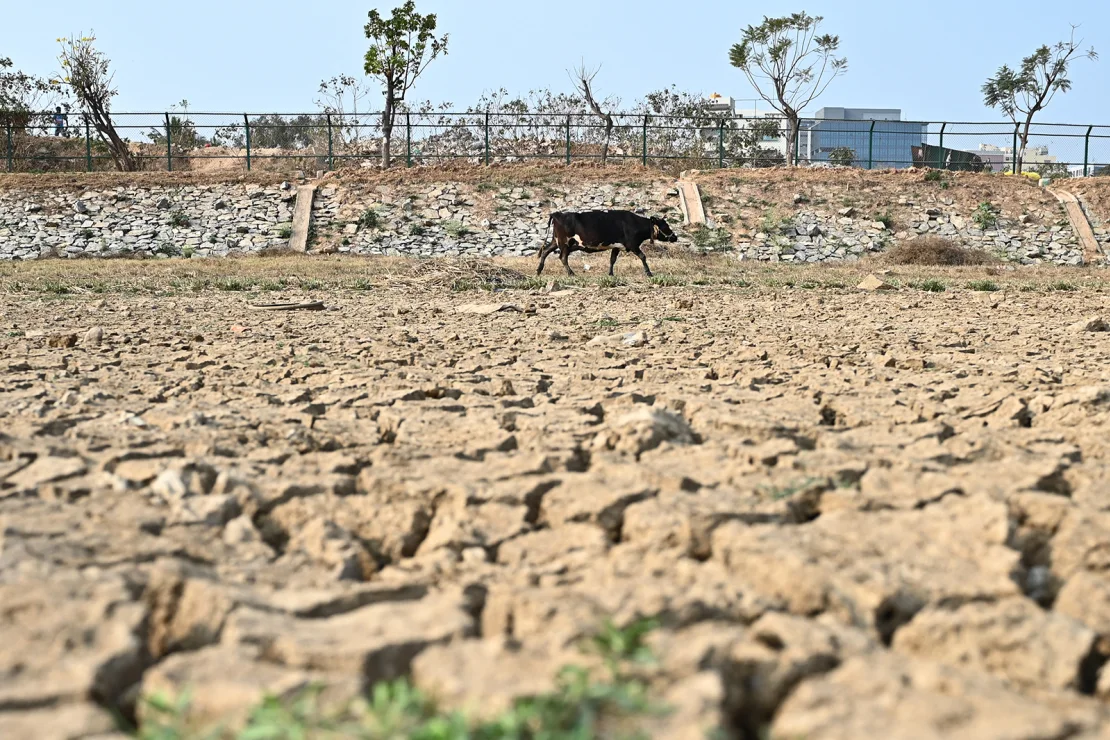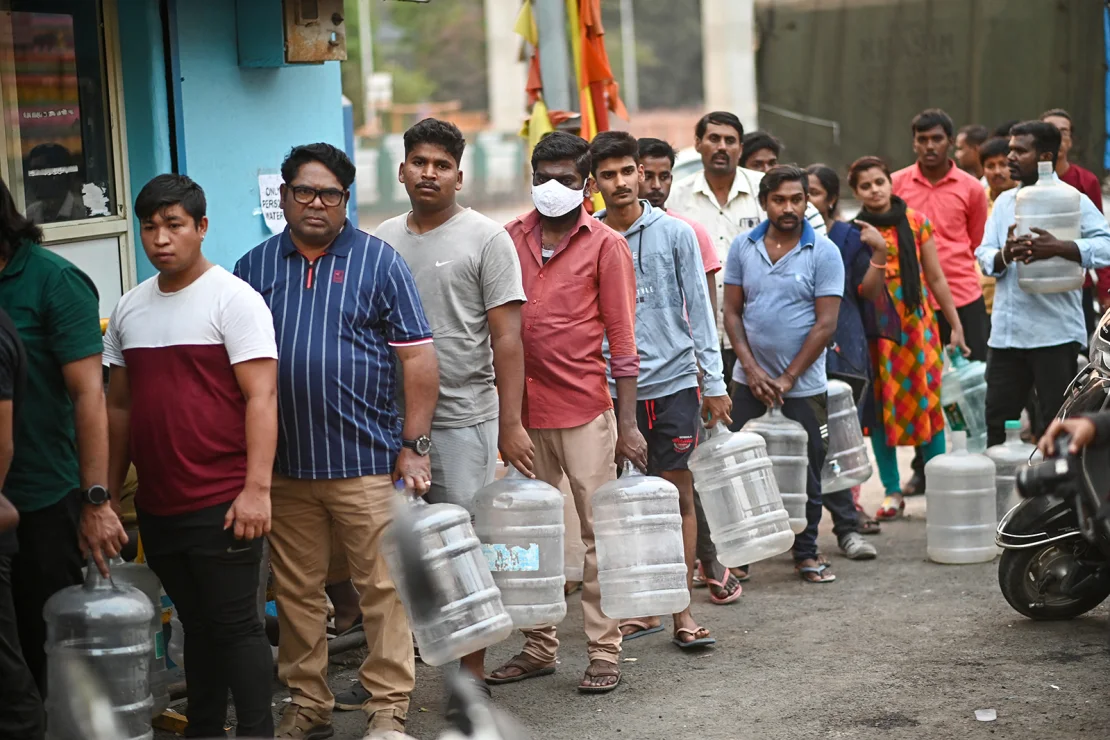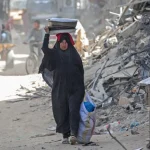The sight is not unusual says Susheela, a resident of the suburb of Bandepalya, who goes by one name and needs the water for her family of four. “Sometimes fights break out, there is a lot of arguing,” she said. “But what do we do? We need water. We are desperate.”
Susheela’s taps – like millions of others – in the southern city of Bengaluru have run dry and the borewells that supply water to her household are empty.
The tech hub, known as India’s “Silicon Valley” and home to giant multinationals like Infosys and Wipro, requires about 2 billion liters (528 million gallons) of water for its nearly 14 million residents every day. But those numbers dwindled to alarming levels, falling about 50% over the past week, according to the chairman of the city’s water supply and sewage board, V. Ram Prasat Manohar.
Residents have been advised to use water sparingly – encouraged to bathe on alternate days, use disposable cutlery, and limit washing clothes and utensils.
It’s a crisis that has been described as dire by those who live in Bengaluru – and experts warn it is only going to get worse as mercury levels climb in the lead up to summer.
“I have been warning about this for over a decade,” said climate scientist T.V. Ramachandra, from the Centre for Ecological Sciences. “It’s a culmination of unplanned urban growth, rapid deforestation and the ongoing climate crisis – and everyone is paying the price.”
From India’s garden city to dried up lakes
For decades, Bengaluru – also known as Bangalore – had a reputation for its wide network of man-made lakes that provided water to the city’s residents. The abundance of greenery and surrounding forests, boosted by its 900-meter (nearly 3,000 feet) elevation and pleasant climate, earned it the moniker “India’s garden city.”
But since the early 1990s, Bengaluru has undergone rapid urbanization, as its transformation into a major tech center resulted in exponential growth. Developers cut down the forests and built around its lakes as the city of about 4 million exploded to house more than three times that.
As layers of tarmac swept through the city, Bengaluru lost its ability to absorb water, Ramachandra said.
“Today 83% of Bangalore is covered in concrete,” he added. “There is no vegetation. There is no way that groundwater recharging can happen further to go to the underlying layers. This is a big problem.”
Rapid urbanization and the decline of waterbodies could also worsen the impact of the climate crisis, contributing to a rise in the city’s temperatures, Ramachandra warned.

More than 70% of the city’s water comes from the Cauvery River, a major waterway that flows through southern Karnataka state, of which Bengaluru is the capital.
But as the city expanded, authorities didn’t have enough time to extend its network of water pipes into the new neighborhoods, with these areas relying on groundwater extracted by borewells.
A weak monsoon last year depleted groundwater levels, causing a water shortage for the city’s huge population.
But for about 4 million of them who rely on the borewells and live mostly on the outskirts of the city, the situation is much worse. Some 7,000 of the city’s 16,000-odd borewells have run dry, according to Bengaluru’s Deputy Chief Minister D.K. Shivakumar – and experts say the focus should be on helping them.
“For the 11 million people (dependent on the Cauvery River), there’s a bit of scarcity but not too much of a crisis,” said civil engineer and Bengaluru-based water researcher Vishwanathan, who goes by one name.
“For the other three and a half million people who are completely dependent on groundwater, there is a crisis because groundwater is going dry.”

‘Pushing families to the limit’
Residents from Bandepalya, a low-income community suburb in the city’s south, line up with buckets from 9 a.m., waiting for the water tanker to arrive.
Private tankers commissioned by the government distribute water to neighborhoods when river and groundwater levels run low, charging residents for the service and hiking prices when demand rises.
About four hours later, as the afternoon arrives in Bandepalya, so too does the tanker.
Scenes of chaos and anxiety follow as they hustle to fill their buckets and bring them home. Women try to fill two large buckets each to carry to their homes nearby. One woman begins to hit the vessel to check its water levels.
The tanker is emptied within minutes.
“We get water once in 15 days and have to buy water on a daily basis,” said resident Kumkum, who also goes by one name, from her home, adding that she is using bottled water to wash her children’s faces in the mornings.
Kumkum’s youngest child has fallen sick with a high fever because of the crisis.
“All these drums are empty and haven’t had water in them in days,” she said as she pointed to the empty buckets in her home. “We can’t wash our clothes or our utensils. We will catch rainwater just for our chores during the monsoon.”

Authorities capped the price of such deliveries commissioned by the government at 1,200 rupees ($14) per tanker, but residents say they are struggling financially.
Susheela, the resident with the family of four, said people in Bandepalya typically earn between 6,000 – 8,000 rupees ($70 – 95) a month, and many of them have no choice but to now spend half their income buying water from the tankers.
“We are hardly bathing, using water so scarcely. But we are all struggling,” she said.
Geeta Menon, a social worker who works with low-income communities in Bengaluru said the crisis could give rise to diseases and illness as hygiene levels drop.
“Children are defecating on the streets as there’s no water at home, they’re going thirsty, people are unable to cook,” she said. “This is not just a short-term problem, but will have long-term repercussions if it continues.”
CNN has contacted Bengaluru’s Water Supply and Sewage Board but is yet to receive a response.
No one spared
While the city’s poorest are bearing the brunt of Bengaluru’s water crisis, it hasn’t spared the upper middle class either.
Management from many housing societies send daily updates to its residents, warning them of shortages and urging them to be careful with their water usage.
One apartment complex has sent a notice to its residents saying they must reduce their water usage by 50%.
“Water situation is very alarming!” the notice, seen by CNN, said. “We are hardly receiving any water through from Cauvery supply. We are fully dependable on borewell water. Out of the 11 borewells only 5 are operating. We have absolutely no way of knowing when these wells will get dry. There won’t be any notice period when it happens.”
The shortage has also forced garment factories to slow production while doubling restaurant water bills, according to Reuters. Managers at some global firms are letting some employees skip meetings to collect water from the tankers, it added.
The crisis has meanwhile turned into a political blame game, weeks before a national election, with India’s ruling Bharatiya Janata Party (BJP) protesting the state’s Congress-led government for its alleged mismanagement of the situation.
The main opposition Congress has claimed the BJP has not done enough at a federal level to help financially with the crisis.
Yet, for the city’s residents, the tit-for-tat arguments mean little as they experience the worst of the shortages.
For Maher Taj, a mother of seven, the past few weeks have been unbearable.
“We have cut down how many times we use the bathrooms and take turns to bathe,” she said.
“Our children are using the washrooms in their school and my husband is going at his workplace. I have reduced water usage in all aspects of life. It’s pushing my family to the limit.”


